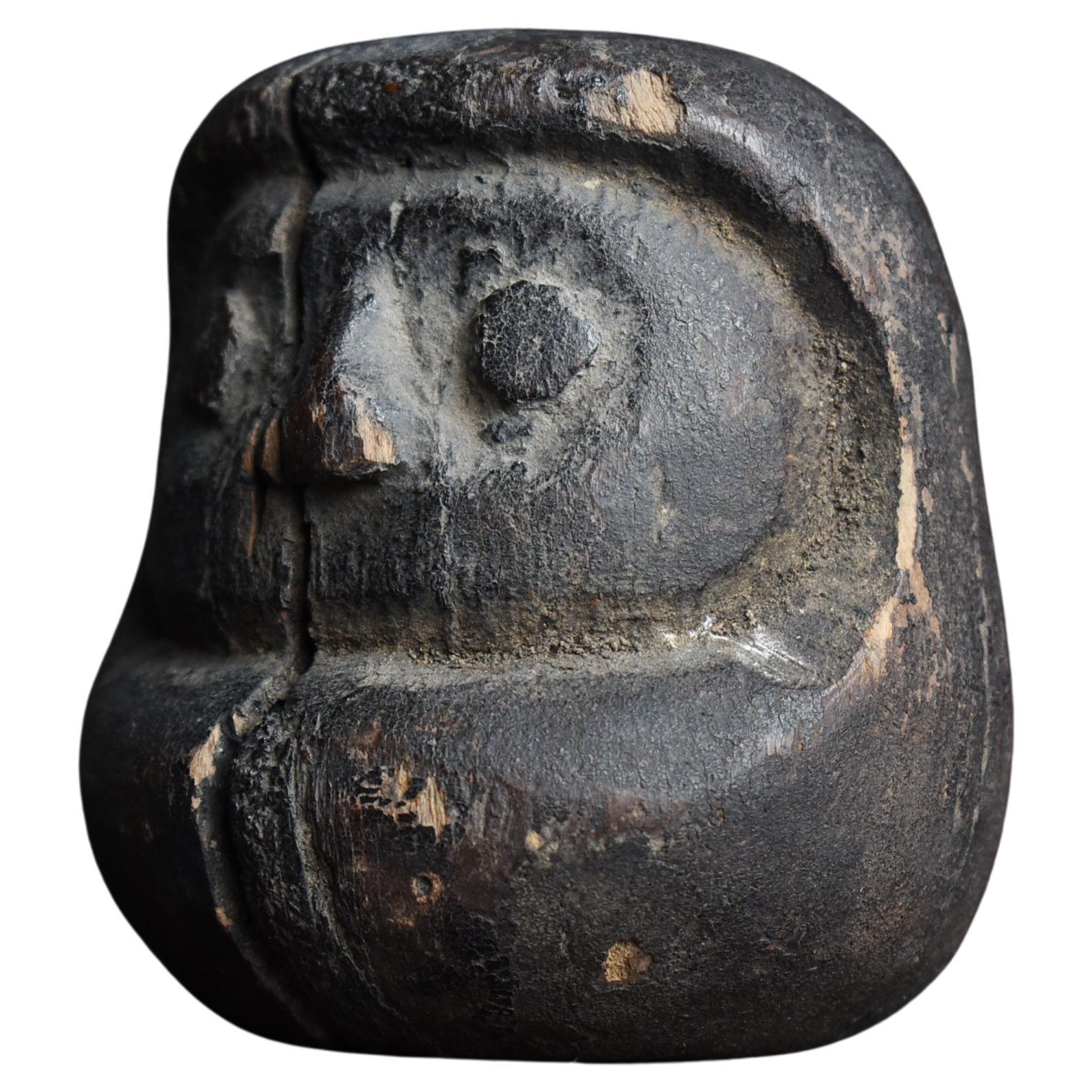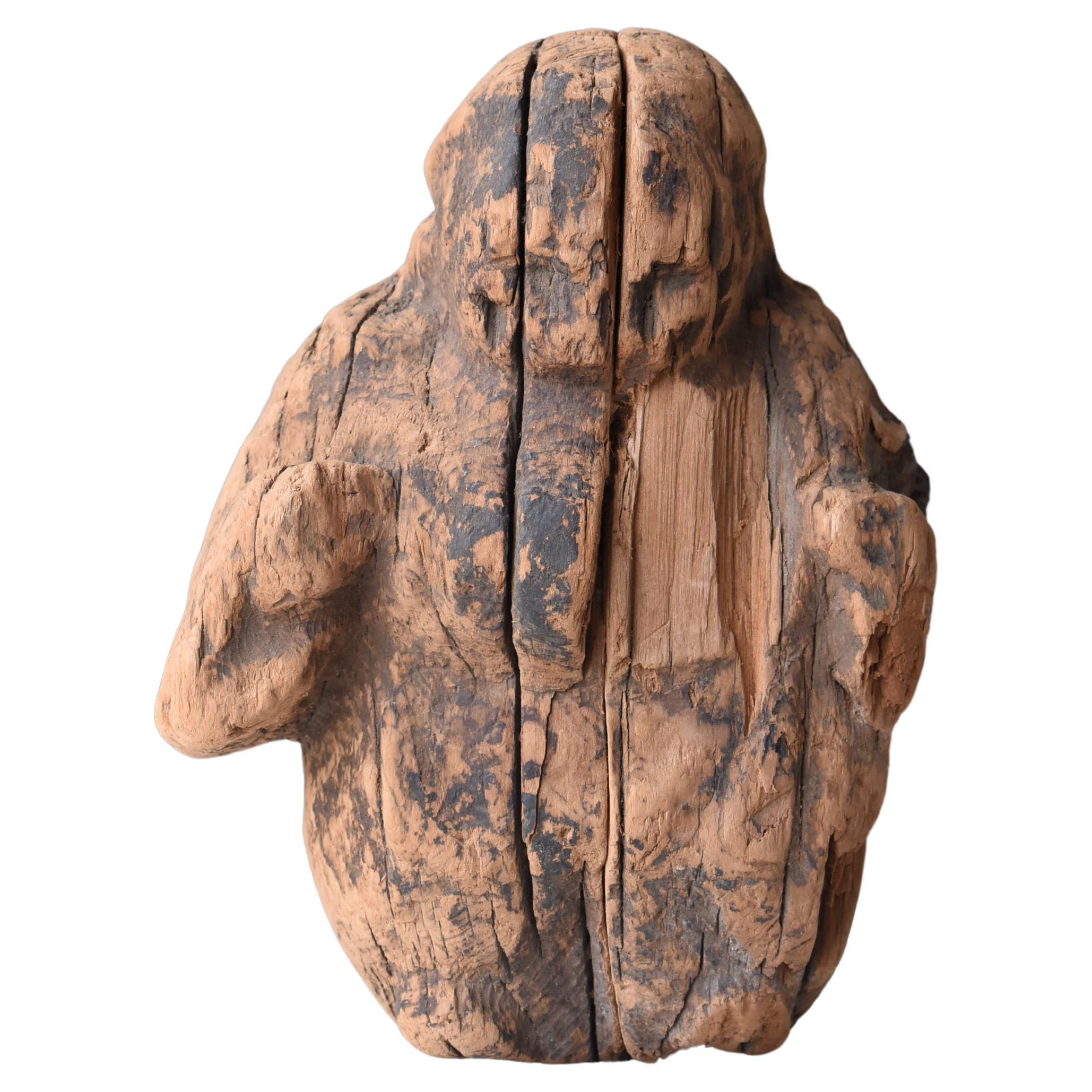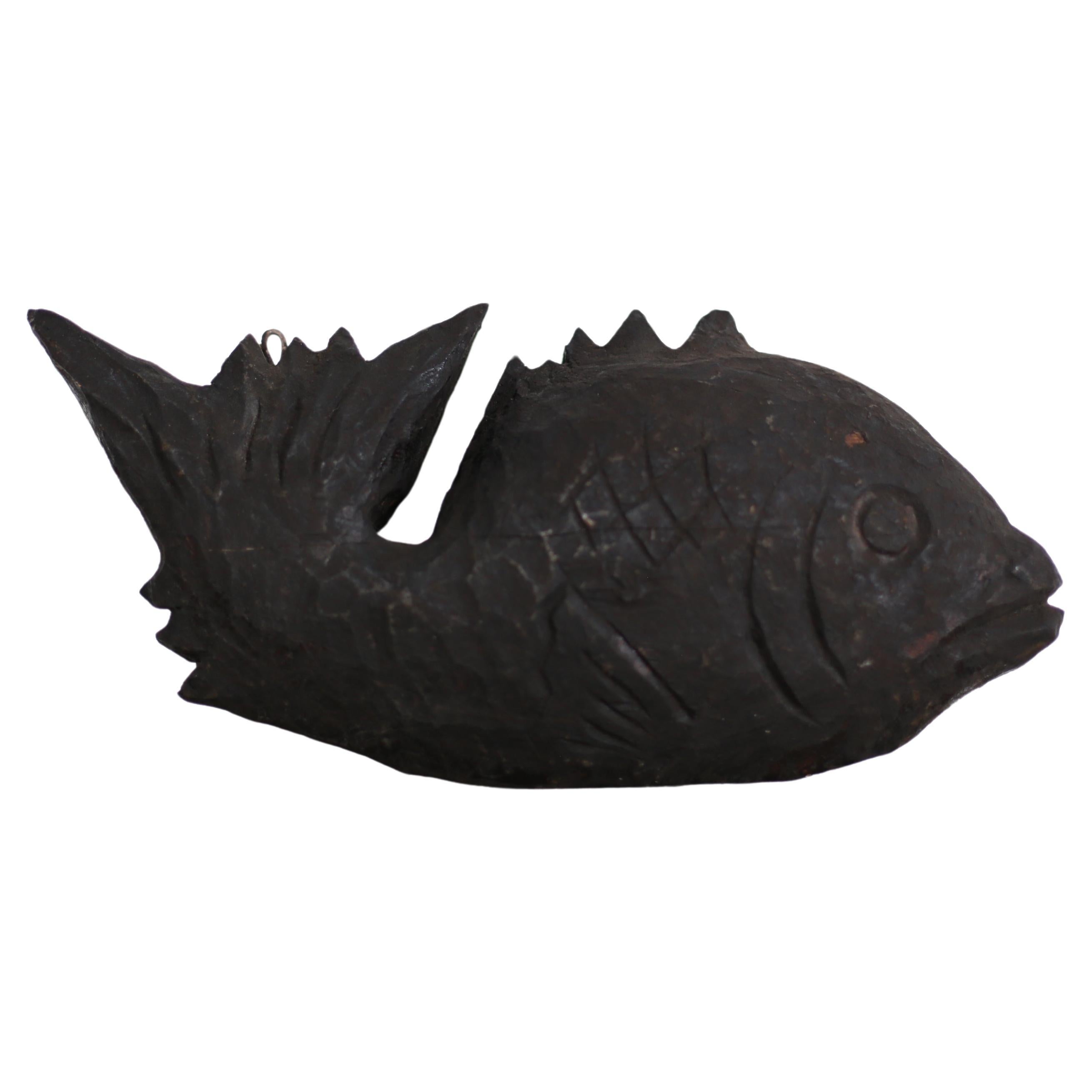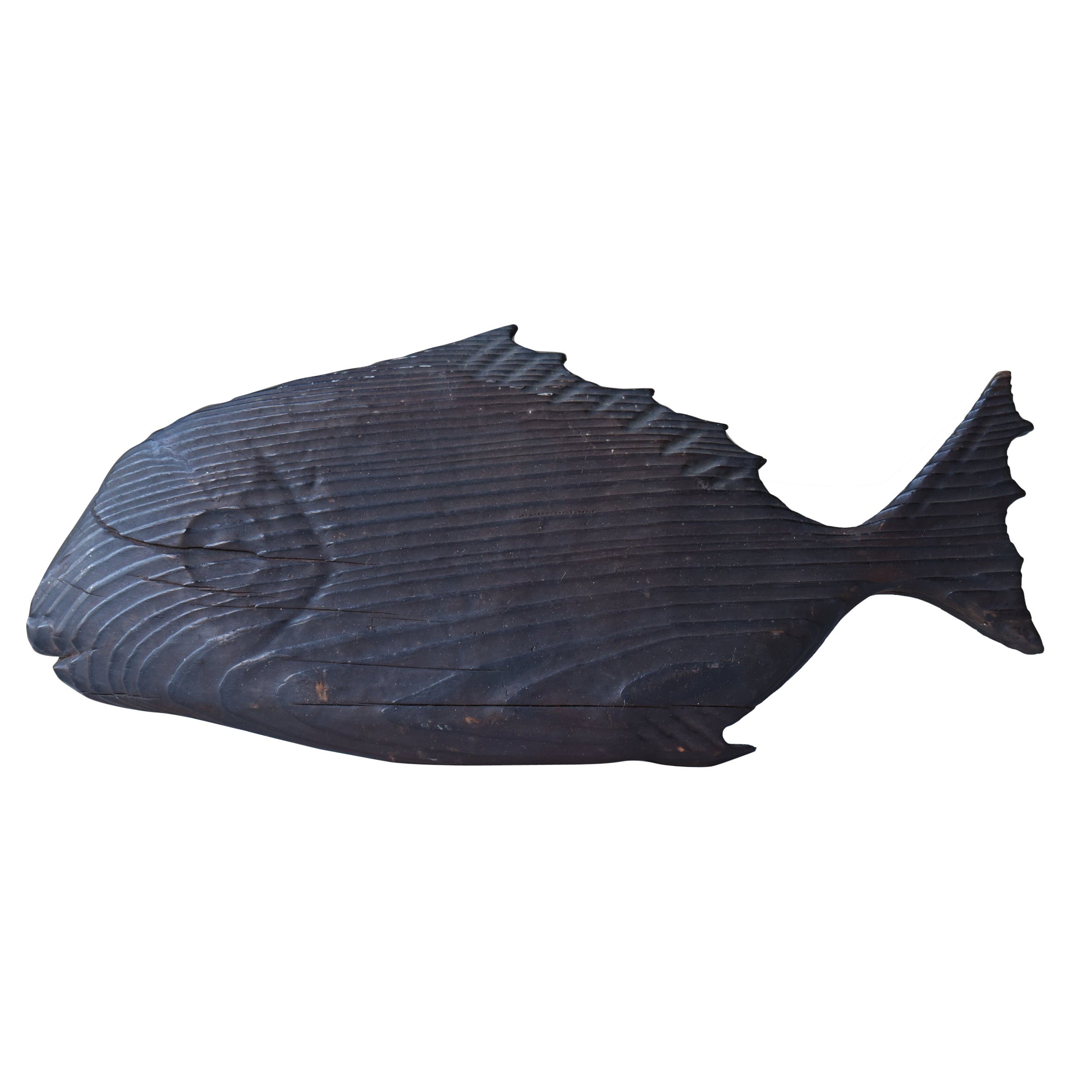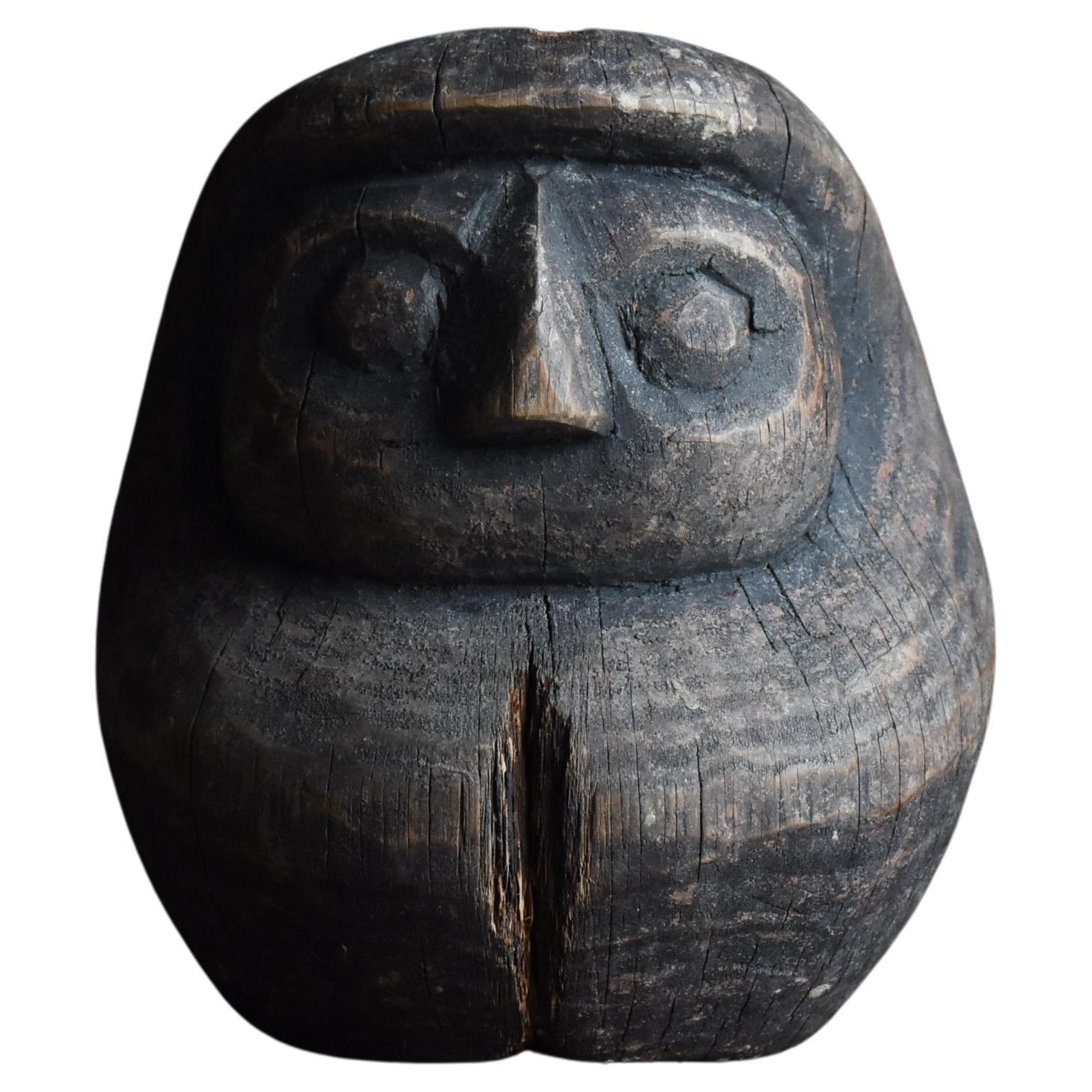Items Similar to Japanese Antique Wood Carving Daruma 1860s-1900s / Sculpture Mingei Wabisabi
Want more images or videos?
Request additional images or videos from the seller
1 of 12
Japanese Antique Wood Carving Daruma 1860s-1900s / Sculpture Mingei Wabisabi
About the Item
Very old Japanese wooden Daruma doll.
It was made during the Meiji period (1860s-1900s).
The material is cedar wood.
This wooden mould is the prototype of the Daruma doll.
Many Daruma dolls were mass-produced using this wooden form.
Although they have outlived their usefulness, they have become established as wonderful works of art.
A very valuable object that evokes the sensibility of wabi-sabi.
Weight 1.2 kg.
- Dimensions:Height: 6.7 in (17 cm)Width: 6.3 in (16 cm)Depth: 5.91 in (15 cm)
- Style:Meiji (Of the Period)
- Materials and Techniques:
- Place of Origin:
- Period:
- Date of Manufacture:1860s-1900s
- Condition:
- Seller Location:Sammu-shi, JP
- Reference Number:1stDibs: LU5487234167662
About the Seller
5.0
Platinum Seller
These expertly vetted sellers are 1stDibs' most experienced sellers and are rated highest by our customers.
Established in 2015
1stDibs seller since 2020
1,110 sales on 1stDibs
Typical response time: 4 hours
- ShippingRetrieving quote...Ships From: Choseigun, Japan
- Return PolicyA return for this item may be initiated within 7 days of delivery.
More From This SellerView All
- Japanese Antique Wood Carving Daruma 1860s-1900s / Sculpture Mingei Wabi SabiLocated in Sammu-shi, ChibaThis is a very old wooden Daruma doll. It was made during the Meiji period (1860s-1900s). The material is cedar wood. A wooden model of Daruma doll. Many Daruma dolls were mass-prod...Category
Early 20th Century Japanese Meiji Sculptures and Carvings
MaterialsCedar
- Japanese Antique Black Daruma 1860s-1900s / Wood Carving Figurine WabisabiLocated in Sammu-shi, ChibaThis is a very old wooden black Daruma doll. It was made in the Meiji period (1860s-1900s). The material is cedar wood. This wooden form is the original D...Category
Early 20th Century Japanese Meiji Sculptures and Carvings
MaterialsCedar
- Japanese Antique Wood Carving「Daikokuten」1860s-1900s / Figurine Mingei WabisabiLocated in Sammu-shi, ChibaThis is a very old Japanese wooden statue. It is from the Meiji era. (1860s-1900s). It appears to be made of cedar wood. It is called "Daikokut...Category
Early 20th Century Japanese Meiji Sculptures and Carvings
MaterialsCedar
- Japanese Antique Wood Carving Fish 1860s-1900s / Mingei Figurine Object WabisabiLocated in Sammu-shi, ChibaThis is a very old Japanese wood carving of a fish. It is a wood carving from the Meiji period (1860s-1900s). It is carved from cedar wood. This wood carving is attached to a free h...Category
Early 20th Century Japanese Meiji Sculptures and Carvings
MaterialsCedar
- Japanese Antique Wood Carving Fish 1860s-1900s / Mingei Figurine Object WabisabiLocated in Sammu-shi, ChibaThis is a very old Japanese wood carving of a fish. It is a wood carving from the Meiji period (1860s-1900s). It is carved from cedar wood. This wood carving is attached to a free h...Category
Early 20th Century Japanese Meiji Sculptures and Carvings
MaterialsCedar
- Japanese Antique Wood Carving Daruma 1900s-1920s / Sculpture Mingei Wabi SabiLocated in Sammu-shi, ChibaThis is a very old wooden Daruma doll made in Japan. It was made in the Meiji period (1900s-1920s). The material is cedar wood. This wooden model is the original Daruma doll. Many D...Category
Antique Early 1900s Japanese Meiji Sculptures and Carvings
MaterialsCedar
You May Also Like
- Antique Japanese Kutani Pottery Bodhidharma or Daruma FigurineLocated in Philadelphia, PAAn fine, antique Japanese pottery Daruma figurine. In the form of a Daruma, a depiction of Bodhidharma the semi-legendary founder of Zen/Chan Buddhism. The figure's face and protruding toes are an unglazed dark brown and his robe has a dark red glaze. Simply a charming Japanese figurine...Category
Early 20th Century Japanese Meiji Sculptures and Carvings
MaterialsPottery
- Antique Japanese Mingei YokogiLocated in Point Richmond, CAAntique Japanese Yokogi, a fish shaped fulcrum for the pot hook assembly over the hearth, a naively carved Tai (Sea Bream) with large head pierced for the hooked pole and the large tail pointed upward with a metal loop for the cord attachment, incised carving for facial details and scales, encrusted patina from use. Wood storage box made of hinoki. Excellent condition. 5-7/8 in. high x 14-3/4 in. long x 4 in. wide. Weight: 4 lbs. 4 oz. Late Edo, Circa 1800. Published in a Japanese newspaper in 1964 (article and translation available). Provenance: with Kingo Kondo, Kyoto 1964 Ken Domon...Category
Antique Early 1800s Japanese Edo Sculptures and Carvings
MaterialsWood
- Antique Japanese Wooden Nestuke 'Crab' 1900s 'Gyokuseki' Meiji EraLocated in Paris, FRThis is an antique netsuke made in Japan around meiji period 1900s. This netsuke was made by a netsuke artist 'Gyokuseki' (you can see his signature on the bottom of this crab.) Net...Category
Antique Early 1900s Japanese Meiji Sculptures and Carvings
MaterialsWood
- Wood Carving SculptureLocated in Dallas, TXThis wood carving sculpture origins from China, circa 1880.Category
Antique 19th Century Chinese Sculptures and Carvings
MaterialsWood
- Japanese Paloma Wood Carving Okimono of JurojinLocated in New York, NYA Japanese carved paloma wood Okimono of Jurojin (god of longevity with a turtle). A symbol of long life, the sculpture also depicts a young boy representing the beginning of life. Carved from one piece of boxwood with a beautiful rich patina. Jurojin originated from the Chinese Daoist god, the old man of the South Pole, he may have been a historical figure of the Northern Song Dynasty...Category
Antique Late 19th Century Japanese Meiji Sculptures and Carvings
MaterialsBoxwood
- Japan Antique Daruma Hand-Carved Talisman of Perseverance and Good LuckLocated in South Burlington, VTJapan, a dramatic large-scale antique Daruma hand-carved in the round with finely detailed hair, nose and brows - a wooden Talisman of perseverance and good luck from the early 20th century. These were hand turned and hand carved to serve as solid wood molds for making paper mache versions. While they occasionally appear in Japanese antique markets...Category
Antique 19th Century Japanese Meiji Sculptures and Carvings
MaterialsWood
Recently Viewed
View AllMore Ways To Browse
Antique Japanese Wooden Dolls
Japanese Dolls Wooden
Antique Chinese Opera Dolls
Chinese Opera Dolls Antique
Green Tara Statue
Small Hanging Outdoor Lanterns
Sancai Camel
Solid Silver Buddha
Vintage Chinese Cork Art
Wise Men Statues
Asian Marble Egg
Chinese Warrior Figurines
Gilt Rabbits Moon
Damaru Drum
Foo Dog Jade Antique
Handmade Chinese Wooden Box
Juzu Beads
Koga Tadao
